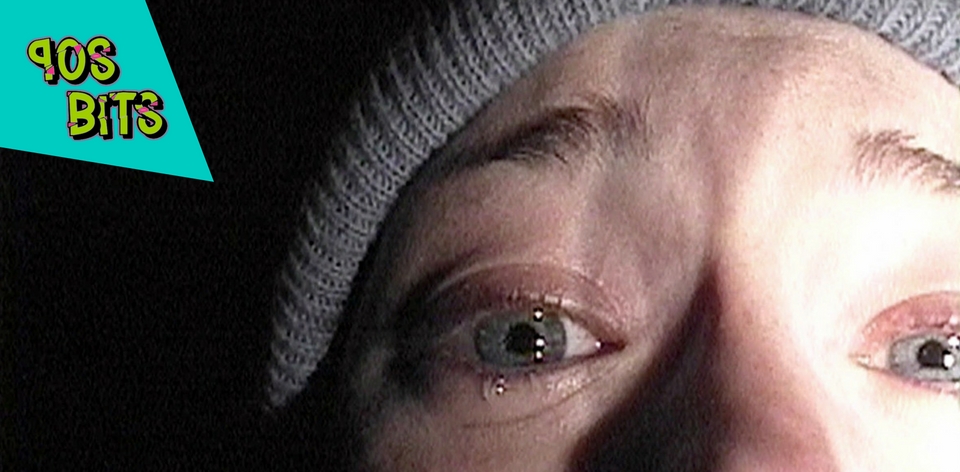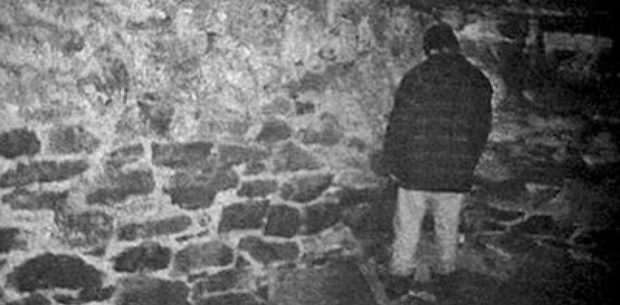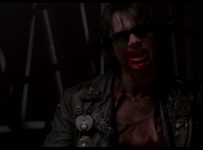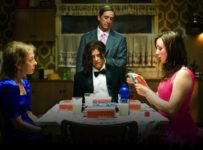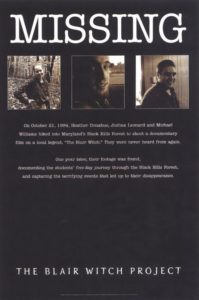 It’s hard to convey just what a big deal THE BLAIR WITCH PROJECT was back in 1999. One of the first films to prominently use Internet marketing, younger readers will find its viral approach commonplace 17 years on. Yet there was a time when we believed that what we were seeing might actually be a documentary. The ‘truth’ may have been revealed in the years to follow, but little has diminished its sheer terror and originality.
It’s hard to convey just what a big deal THE BLAIR WITCH PROJECT was back in 1999. One of the first films to prominently use Internet marketing, younger readers will find its viral approach commonplace 17 years on. Yet there was a time when we believed that what we were seeing might actually be a documentary. The ‘truth’ may have been revealed in the years to follow, but little has diminished its sheer terror and originality.
THE BLAIR WITCH PROJECT, directed by Daniel Myrick and Eduardo Sánchez, was not the first film to use the found footage concept. In the realm of horror movies alone, Ruggero Deodato’s Cannibal Holocaust (1980) pushed many boundaries, including the use of found footage to forward the narrative. Yet it’s arguable Myrick and Sánchez’s film was one of the first to bring the concept to the mainstream.
The idea is a simple one, with the film boldly telling you what is going to happen in the shuddering opening title cards. “In October of 1994 three student filmmakers disappeared in the woods near Burkittsville, Maryland while shooting a documentary. A year later their footage was found.” We follow Heather Donahue, Michael C. Williams, and Joshua Leonard playing fictionalised versions of themselves as they head into the Black Hills to investigate the legend of the Blair Witch, the subject of local legend and superstition. When it is obvious they have become lost, tensions mount, especially when strange symbols and apparent supernatural happenings begin to surround them.
The found footage technique has been (over)used so much in the subsequent years, with Rec (2007), Paranormal Activity (2007), Cloverfield (2008), Troll Hunter (2010), and Chronicle (2012) applying it to a variety of genres. Comparatively, THE BLAIR WITCH PROJECT really looks as though it was shot 20 years ago, and if anything adds to the ‘authenticity’ of the piece as the years go by. In 1998, The Last Broadcast concerned a search for the Jersey Devil, shot entirely on consumer equipment, and while Myrick and Sánchez use a combination of video and “16mm” footage, there remains an immediacy to the film almost two decades later.
In retrospect, you can see the cogs behind THE BLAIR WITCH PROJECT. The amateur production is meant to represent a version of ‘reality,’ although a harsh reality is that all of the cast are terrible at playing themselves. All of them were nominated for Razzies, with Donahue winning the Golden Raspberry for Worst Actress. Even so, this too fades away after the first twenty minutes or so, with key moments of shock and honesty causing us to forget this is manufactured. Over 19 hours of footage was skilfully edited down to just 90 minutes, so it’s necessarily a creation of what the filmmakers want us to see.
This conceit might be aided even more in the 21st century’s context of ubiquitous ‘reality’ television. We accept that shows such as The Hills or The Only Way Is Essex contain explicit disclaimers: “The following program may contain scenes that have been created purely for entertainment purposes.” Whether conscious or not, Myrick and Sánchez anticipated the state of entertainment of the next few decades, and their film increasingly becomes a natural part of the pop culture landscape. Indeed, they created a whole mythology around their fake universe, including newsreel footage, flyers, and faux cable specials.
It doesn’t mean a thing if the film doesn’t achieve its purpose in being scary. This is something that THE BLAIR WITCH PROJECT does incredibly well (and not just in the acting department). Much of the film is a slow building tension, as emotions run high due to the trio being lost in the woods, but there are two key scenes that chill to the bone. After several nights in a row of strange disturbances, Heather records an apology to her family and her colleagues’ families. The scene is pure and unadulterated fear, unflinchingly focusing on the reactions to terror rather than the threat itself. Like Jaws, Myrick and Sánchez keep their monster out of sight, but never out of mind.
Arguably the most memorable sequence comes in the final moments inside an abandoned house. Mike races to find the missing Josh in the basement, and a hysterical Heather tries to follow. Entirely seen through point-of-view shots, the terrifying vision of Mike facing a corner is followed by an attack that causes Heather to drop her camera and the footage to end. The film is a little too reliant on this scene, and the law of diminishing returns should dictate that it has less impact the more you see it. Nevertheless, we challenge anybody to sit alone in a room at night and not feel unnerved by what is unfolding in front of them.
17 years later, the legacy of THE BLAIR WITCH PROJECT remains strong, with an official follow-up simply named Blair Witch out in September 2016. Is it possible to recapture this lightning in a bottle, or is it something distinctly ’90s? The very different Book of Shadows: Blair Witch 2 indicated that follow-ups are not easy. Either way, Myrick and Sánchez popularised something that continues to this day, and despite all evidence to the contrary, part of us still believes its true.
[stextbox id=”grey” bgcolor=”F2F2F2″ mleft=”5″ mright=”5″ image=”null”]1999| US | DIR: Daniel Myrick and Eduardo Sánchez | WRITERS: Jacob Cruse, Eduardo Sánchez | CAST: Heather Donahue, Michael C. Williams, Joshua Leonard | DISTRIBUTOR: Artisan Entertainment| RUNNING TIME: 81 minutes | RELEASE DATE: 30 July 1999 (US)[/stextbox]

